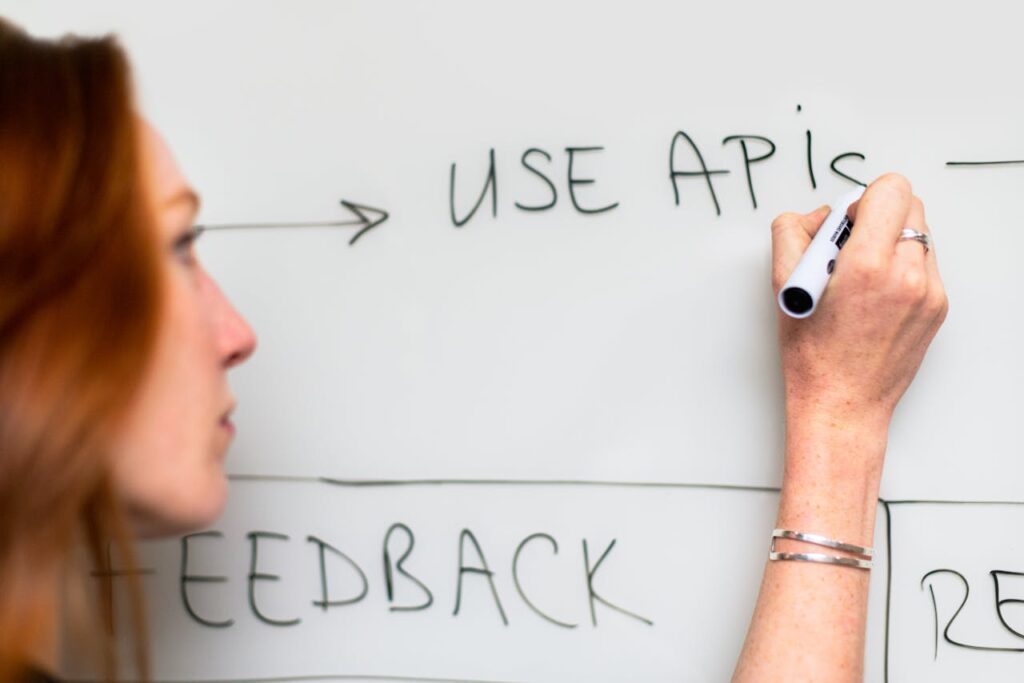
In the fast-paced world of B2B marketing, staying ahead of the curve isn’t just a goal—it’s a necessity. The way businesses approach strategy, execution, and adaptation can make or break their success. Enter Agile development, a methodology that’s not just for software teams anymore. When applied to B2B brand strategy, Agile can be a game-changer, helping businesses pivot quickly, deliver value consistently, and build stronger relationships with their customers.
But how exactly does Agile development fit into the world of B2B branding? And why should you care? Let’s break it down.
Table of Contents
What is Agile Development, and Why Does It Matter for B2B Brands?
Agile development originated in the software industry as a way to manage projects more efficiently. Instead of following a rigid, linear plan, Agile focuses on iterative progress, collaboration, and flexibility. Teams work in short cycles (called sprints) to deliver small, incremental improvements, gather feedback, and adjust their approach as needed.
For B2B brands, this mindset is incredibly powerful. Why? Because the B2B landscape is complex, competitive, and constantly evolving. Customers expect personalized experiences, rapid responses, and solutions that adapt to their changing needs. Traditional, long-term brand strategies often fall short in this environment. They’re too slow, too rigid, and too disconnected from real-time customer insights.
Agile development, on the other hand, aligns perfectly with the demands of modern B2B marketing. It’s about being responsive, data-driven, and customer-centric—qualities that every successful B2B brand needs.
The Core Principles of Agile Development in B2B Brand Strategy
To understand how Agile can transform your B2B brand strategy, let’s look at its core principles and how they apply to branding:
Iterative Progress Over Perfection
In Agile, the goal isn’t to create a “perfect” product from the start. Instead, it’s about making continuous improvements based on feedback. For B2B brands, this means launching campaigns, messaging, or initiatives quickly, testing their effectiveness, and refining them over time.
Example: Instead of spending months crafting the “perfect” brand campaign, launch a pilot version, gather customer feedback, and tweak it to better resonate with your audience.
Customer Collaboration Over Assumptions
Agile emphasizes close collaboration with end-users. For B2B brands, this means involving your customers in the branding process. Use surveys, interviews, and analytics to understand their pain points, preferences, and expectations.
Example: If you’re rebranding, involve key clients in the process to ensure your new identity aligns with their values and needs.
Adaptability Over Rigidity
Agile is all about flexibility. In a B2B context, this means being ready to pivot your strategy based on market trends, competitor actions, or customer feedback.
Example: If a new competitor enters your space, use Agile principles to quickly adjust your messaging and positioning to stay relevant.
Cross-Functional Collaboration
Agile teams are typically cross-functional, with members from different departments working together. For B2B brands, this means breaking down silos between marketing, sales, product, and customer service to create a cohesive brand experience.
Example: Align your sales and marketing teams to ensure your brand messaging is consistent across all touchpoints.
How to Implement Agile Development in Your B2B Brand Strategy
Ready to bring Agile into your B2B branding efforts? Here’s a step-by-step guide to get started:
1. Start with a Clear Vision
Before diving into Agile, define your brand’s vision, mission, and goals. What do you want to achieve? Who is your target audience? What makes your brand unique? Having a clear foundation will guide your Agile efforts and ensure everyone is on the same page.
2. Break Down Your Strategy into Sprints
Instead of creating a year-long brand strategy, break it down into smaller, manageable sprints. Each sprint should focus on a specific goal, such as launching a new campaign, updating your website, or refining your messaging.
Tip: Use tools like Trello, Asana, or Jira to organize and track your sprints.
3. Gather Data and Feedback
At the end of each sprint, gather data and feedback to evaluate your progress. Use analytics, customer surveys, and team retrospectives to identify what worked, what didn’t, and what needs improvement.
Tip: Don’t rely on vanity metrics like website traffic. Focus on meaningful KPIs like lead quality, customer engagement, and conversion rates.
4. Iterate and Improve
Based on your findings, make adjustments and move on to the next sprint. The goal is to continuously improve your brand strategy, ensuring it stays aligned with your customers’ needs and market trends.
Tip: Don’t be afraid to experiment. Agile is all about testing new ideas and learning from the results.
5. Foster a Culture of Collaboration
Agile works best when everyone is involved. Encourage open communication and collaboration across your organization. Break down silos and ensure all teams are working toward the same brand goals.
Tip: Hold regular cross-functional meetings to share insights, align priorities, and celebrate wins.
Real-World Examples of Agile B2B Branding
Still not convinced? Here are a few examples of how B2B brands have successfully used Agile principles to transform their strategies:
- HubSpot: The marketing software giant uses Agile to continuously refine its brand messaging and campaigns. By gathering real-time data and feedback, HubSpot ensures its content and offers remain relevant to its audience.
- IBM: IBM adopted Agile to streamline its branding efforts across multiple departments. By breaking down silos and fostering collaboration, the company created a more cohesive and impactful brand experience.
- Slack: Slack’s B2B branding strategy is built on constant iteration. The company regularly updates its messaging, features, and user experience based on customer feedback, ensuring it stays ahead of the competition.
The Benefits of Agile Development for B2B Brands
So, what’s in it for you? Here are just a few of the benefits you can expect from adopting Agile in your B2B brand strategy:
- Faster Time-to-Market: Agile allows you to launch campaigns and initiatives quickly, giving you a competitive edge.
- Better Customer Alignment: By involving customers in the process, you can create a brand that truly resonates with their needs and values.
- Increased Flexibility: Agile makes it easier to adapt to changes in the market, ensuring your brand stays relevant.
- Improved Collaboration: Breaking down silos and fostering cross-functional teamwork leads to a more cohesive and effective brand strategy.
- Higher ROI: By focusing on continuous improvement, you can maximize the impact of your branding efforts and achieve better results.
Final Thoughts: Is Agile Right for Your B2B Brand?
Agile development isn’t just a buzzword—it’s a powerful approach that can transform the way you build and execute your B2B brand strategy. By embracing iterative progress, customer collaboration, and adaptability, you can create a brand that’s not only resilient but also deeply connected to your audience.
That said, Agile isn’t a one-size-fits-all solution. It requires a shift in mindset, a commitment to collaboration, and a willingness to embrace change. If you’re ready to take your B2B brand to the next level, Agile might just be the secret sauce you’ve been looking for.
So, what are you waiting for? Start small, experiment, and see how Agile can work for your brand. The results might just surprise you.

